GALILEO
Return to main
Galileo Table of Contents Page.
The Galileo Energetic Particles Detector
Galileo EPD Handbook
Chapter 1. Instrument Summary
Galileo T.A.C. Board
Source: Critical Design Review, Dec., 1987.
Design requirements:
- Process start/stop pulses corresponding to flight times between 5 nS and 50 nS and output a voltage waveform representing time of flight
- Reject all start pulse only (singles)events
- Output:
- An AC coupled pulse with its positive lobe peak voltage representing time of flight
- A digital start pulse for all start input pulses
- A digital T.A.C. pulse for all valid T.A.C. events (start and stop)
Design Guidelines:
- Adapt successful GIOTTO T.A.C. design concept for the Galileo EPD Time of Flight
- Interface directly with existing Galileo EPD hardware
- Use GIOTTO input hybrids to detect start/stop pulses down to a few mv
- Reset/enable quickly following start only (singles) events
- Expected total dose: 2.5 x 10
5 Rad Si
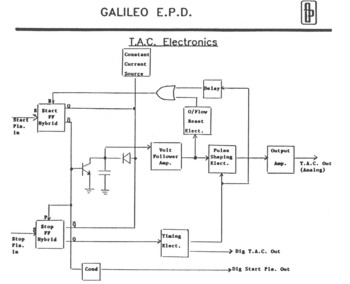 |
Figure 1-18. EPD TAC Electronics. Source: Critical Design Review, December 1987. |
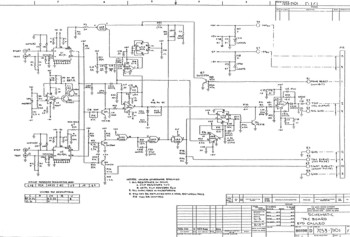 |
Figure 1-19. Schematic of EPD TAC board. Source: Critical Design Review, December 1987. |
Figure 1-20. Output Waveforms.
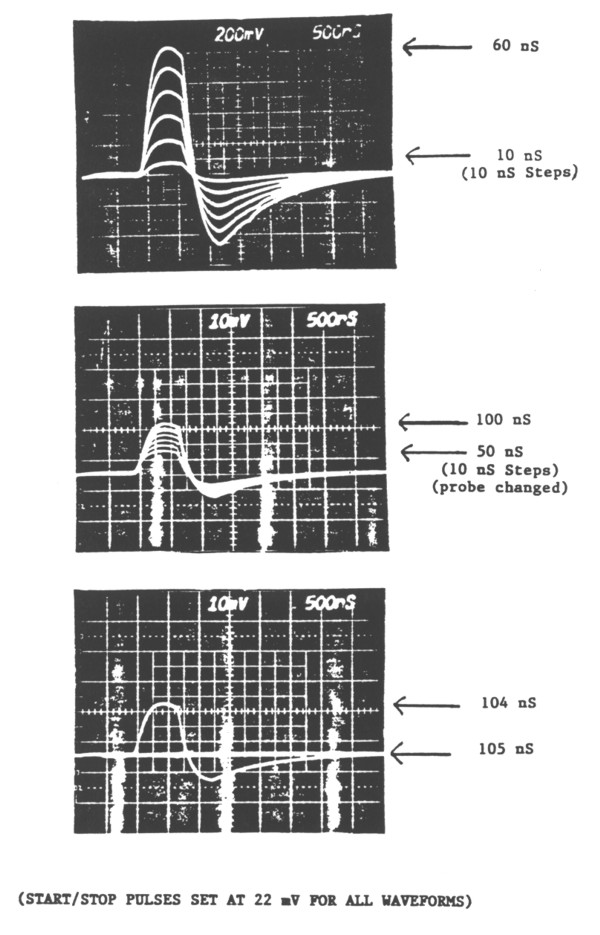
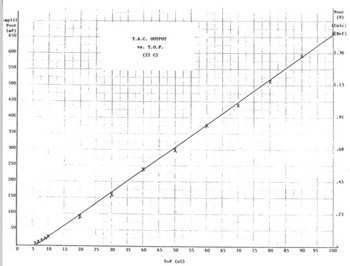 |
Figure 1-21 TAC output vs. TOF (22°C) |
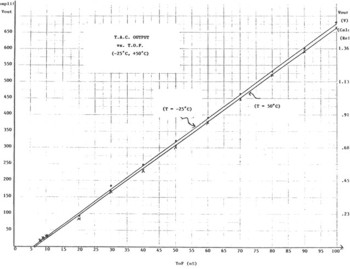 |
Figure 1-22 TAC output vs. TOF (-25°C, +50° C) |
Next: CMS Analog Electronics (Pre-Challenger Information)
Return to the CMS Subsystem Index
Return to Galileo EPD Handbook Table of Contents Page.
Return to main
Galileo Table of Contents Page.
Return to Fundamental
Technologies Home Page.
Updated 8/23/19, Cameron Crane
QUICK FACTS
Manufacturer: The Galileo Spacecraft
was manufactured by the Jet Propulsion Laboratory,
Messerschmitt-Bölkow-Blohm, General Electric, and the
Hughes Aircraft Company.
Mission Duration: Galileo was planned to have a mission duration of around 8 years, but was kept in operation for 13 years, 11 months, and 3 days, until it was destroyed in a controlled impact with Jupiter on September 21, 2003.
Destination: Galileo's destination was Jupiter and its moons, which it orbitted for 7 years, 9 months, and 13 days.
Mission Duration: Galileo was planned to have a mission duration of around 8 years, but was kept in operation for 13 years, 11 months, and 3 days, until it was destroyed in a controlled impact with Jupiter on September 21, 2003.
Destination: Galileo's destination was Jupiter and its moons, which it orbitted for 7 years, 9 months, and 13 days.



